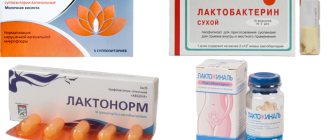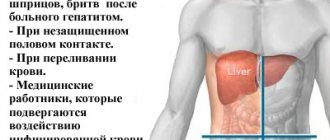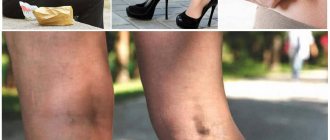Home › Varicose veins › Varicose veins during pregnancy in the groin
10/05/2018 · Varicose veins · No comments yet
Many women, when carrying a fetus, are faced with the problem of developing varicose veins. This pathology can affect the groin, perineum, pelvic organs and lower extremities. But, most often, expectant mothers are diagnosed with varicose veins during pregnancy in an intimate place. This is explained by numerous physiological changes in the body that lead to increased pressure on the veins in the groin.
Planning a pregnancy
Understanding the fact that pregnancy is a very important and stressful period for a woman will allow you to approach it more thoughtfully. The health status of both the child and the expectant mother largely depends on how well the pregnancy was planned and how it progresses. If a woman has any problems with the veins, or has a hereditary tendency to their diseases, she should first eliminate any manifestations of the pathology, carry out active treatment and eliminate symptoms.
Since it is the pelvic organs that bear the main burden during the development of pregnancy, there is often a worsening of even the initial stages of varicose veins that develop in a woman’s intimate area. The uterus, growing in volume and weight, puts more and more pressure on the external labia and perineum, creating ever-increasing pressure on the affected veins. This aggravates the situation, complicating the healing process. And although varicose veins in any part of the body are considered an incurable disease, its early stages can be corrected.
Most often, varicose veins develop after childbirth: it is after pushing during childbirth that the veins increase in size naturally, forming nodes from them, which subsequently become inflamed and cause a lot of inconvenience to the woman. The recovery process can be complicated by the presence of concomitant diseases. Varicose veins on the labia, which can occur during or after childbirth, are accompanied by unpleasant or painful sensations and discoloration of the skin in the groin area.
Prevention measures
Despite numerous reviews from women who encountered this complication during pregnancy and claim that varicose veins went away on their own, this disease should not be ignored. It is always easier to prevent the development of a disease than to fight a developed disease.
The best prevention of congestive degenerative processes in the groin area is physical activity and wearing compression garments. Visiting the pool, doing gymnastic exercises on your own or attending special classes for expectant mothers, walking in the fresh air
During the day, it is important to alternate between exercise and rest. You need to rest on the couch for at least an hour
Another habit that a woman in an “interesting position” should acquire is a contrast shower. It tones, invigorates, serves as an excellent prevention of stretch marks and cellulite, and also stimulates blood flow and prevents the development of vein pathology.
It is advisable to completely avoid taking hot baths, try to avoid stuffy rooms and stay in the heat as little as possible. This creates additional stress on the body, which only worsens the functioning of the circulatory system.
Doctor's comment:
Causes of varicose veins during pregnancy
A disease such as varicose veins is caused by a deterioration in the outflow of venous blood from the veins, which become less elastic. In this case, the formation of a vascular network occurs in the upper layer of the epidermis, which is a cosmetic defect, but to a greater extent poses a health hazard. As the disease progresses and moves to a later stage, and the appearance of symptoms in the intimate area brings a lot of inconvenience to a pregnant woman.
The reasons that can cause this vein damage during pregnancy include the following conditions:
- constantly growing body weight, which is accompanied by an increase in the load on the lower part of the body - on the legs, labia and perineal area;
- an increase in the size of the uterus, which compresses the veins and impairs blood circulation;
- inactivity, which often accompanies the development of pregnancy;
- hormonal changes that occur in the body during pregnancy can provoke disruption of blood flow and deterioration of the vein walls: loss of elasticity, changes in blood composition and thickening, which can cause the formation of blood clots that aggravate the course of varicose veins;
- an increase in the total blood volume in the body, which is caused by the appearance of the placental circulatory system. This increases the load on the vein, and if they have damage in the form of loss of firmness and elasticity of the walls, narrowing of the lumen, the likelihood of further development of pathology increases;
- hereditary factor and genetic predisposition.
In addition to the above reasons, provoking factors for the occurrence of varicose veins in the intimate area can be a long stay on your feet, wearing uncomfortable and tight shoes with frequent formation of edema in the tissues of the legs due to deterioration of the outflow of fluids with a growing uterus (the same applies to tight tights and tight elastic bands of socks or golf), frequent exposure to the sun. If vein lesions are noted even before pregnancy, then childbirth with varicose veins will be the starting point for aggravating the disease: great tension on the genital tract and perineal area, which can last for several hours, circulatory disorders cause a significant deterioration in the general condition of the pregnant woman.
The reasons for the appearance of signs of varicose veins during pregnancy may vary, but they are all due to negative changes in the circulatory system, the presence of venous diseases, and the general health of the woman. However, all of them are aggravated to a large extent during childbirth, as the load on the perineal area increases.
Why are varicose veins dangerous?
Varicose veins are dangerous due to the opening of internal bleeding when the venous wall ruptures. All this is complemented by a psychological factor, since visually the labia become huge and saggy. This can provoke the appearance of an inferiority complex and dysfunction of the reproductive system.
Varicose veins are especially dangerous in pregnant women, since childbirth and prenatal contractions (especially with significant dilatation of the cervix) can become a provoking factor for rupture of blood vessels. If this happens, there is a high risk of internal bleeding.
If varicose veins are not detected in a timely manner, there is a high probability of vascular atrophy. Blood stops circulating in them and the process of vein resorption is activated. If the circulation is severely impaired, then there is a possibility that amputation of the damaged labia will be necessary.
Is it possible to give birth with varicose veins?
Since vein damage such as varicose veins is accompanied by the risk of a significant aggravation of the condition during pregnancy and childbirth, it is necessary to promptly diagnose the disease and begin its treatment. Before planning a pregnancy, phlebologists are recommended to carefully analyze the state of the circulatory system, carry out treatment for any negative changes in the condition of the veins, and also carry out preventive measures to prevent the development of the disease.
For pregnant women whose examination revealed varicose veins of varying degrees, the question arises: is it possible to give birth naturally with varicose veins? A large load on the veins of the perineum during childbirth, increased blood flow, which may have increased viscosity, as a result of which its movement becomes more difficult and the likelihood of blood clots increases. Depending on the stage of neglect of the pathology and the area of its spread, a cesarean section may be recommended for severe varicose veins, since this type of delivery will avoid a strong impact on the affected veins. However, the choice of option is determined by the health of the pregnant woman, the likelihood of worsening the pathological condition and the likelihood of childbirth occurring naturally without a significant worsening of the disease.
Since the natural course of childbirth is the most optimal for both the woman and the newborn, it is the one that is given preference when choosing a birth option. For minor manifestations of varicose veins in the perineum, labia and legs, the attending physician first of all recommends natural childbirth. To prevent worsening of the current condition, the following recommendations should be followed:
- before a natural birth, wrap your legs with elastic bandages to prevent the backflow of venous blood;
- in the period before childbirth, it is recommended to wear compression garments, which will relieve stress from the affected areas and prevent the possibility of aggravation of current symptoms;
- refusal of a hot bath and shower, reducing the amount of physical and psycho-emotional stress received should become mandatory conditions even in the daily life of a pregnant woman who has varicose veins in the groin area and lower extremities.
Diagnosis of this disease does not mean a mandatory rejection of the natural option of childbirth. Whether it is possible to give birth independently with varicose veins on the legs and in the perineum is decided only by the attending physician based on an examination of the pregnant woman’s body and her health indicators. The initial stages of varicose veins, the insignificant severity of symptoms, and the consistently good health of the pregnant woman are the main indicators for choosing a natural type of childbirth.
Surgical intervention is implied in the severity of characteristic symptoms, circulatory disorders, and the occurrence of deformation of the labia. After making a diagnosis and identifying the form of the disease, as well as its stage and area of spread, the doctor decides which delivery option will be preferable in a particular case.
Treatment methods for varicose veins in the groin
Despite the fact that in many women, signs of varicose veins in the groin spontaneously disappear after childbirth, treatment of the pathology during pregnancy is worthwhile. The use of certain methods of therapy makes it possible to remove the symptoms of the disease and prevent numerous exacerbations of the pathology.
- At the initial stage of development of varicose veins, conservative therapy methods are used. First of all, you need to change your lifestyle and eat right. Despite pregnancy, a woman should move a lot, do yoga for pregnant women and visit the pool. This will strengthen the functioning of the muscular-venous valves and improve blood flow.
- Meals should consist of foods enriched with fiber and vitamins. Salty, fried, smoked, fatty and spicy foods are completely excluded from the diet. To maintain water balance, you need to drink 1.5 - 2 liters of purified water per day. And completely eliminate the consumption of carbonated drinks.
- Throughout pregnancy and in the first time after childbirth, it is recommended to wear special therapeutic knitwear. The choice of product and degree of compression is determined by the vascular surgeon.
- Drug treatment during pregnancy consists of local drugs. These include gels, ointments, creams, tinctures. The use of oral medications is prescribed in rare cases. For these purposes, venotonics, anticoagulants, angioprotectors and NSAIDs can be prescribed.
The prescription of any medication is carried out only by a leading obstetrician or vascular surgeon. Self-medication during pregnancy is strictly prohibited.
As additional therapy, vitamin complexes, antioxidants and preparations containing micro and macroelements are prescribed.
- Surgical treatment of varicose veins in the groin during pregnancy is prescribed for advanced forms of the disease. During this period, it is recommended to use the sclerotherapy method. The frequency of procedures is determined taking into account the clinical picture of the disease.
Treatment of varicose veins in pregnant women should be carried out exclusively as prescribed by a doctor and under his supervision. Any changes in the therapeutic complex and determination of its duration are carried out by a specialist depending on the stage of the disease and the timing of pregnancy.
Forms of the disease in pregnant women
Vein diseases can have different localization, severity, and slightly different symptoms. To determine the type of lesion, the doctor conducts an examination and prescribes a series of tests that will help in obtaining the most complete picture of health. Since this disease especially often occurs in the veins of the lower extremities, with all the available provoking factors during pregnancy (increasing body weight, hormonal changes, decreased physical activity), it is localized primarily in the legs.
There may also be congestion of the veins of the pelvic organs, which are aggravated during natural childbirth with varicose veins. To detect this type of pathology, you should promptly pay attention to the following characteristic manifestations of the disease:
- an increase in the volume of the labia minora and a change in their color - they acquire a bluish tint;
- painful urination;
- numbness in the perineal area;
- feeling of dryness in the external genitalia;
- the appearance in the tissues of the labia of painful nodes that have increased in volume of the labia.
The listed manifestations are aggravated by unpleasant sensations that intensify after any type of physical activity, pain that is transmitted to the sacrum and lower back. The manifestations are so characteristic that the diagnosis of the disease can be made without further examination, however, to confirm the diagnosis, the doctor may prescribe studies such as a blood coagulation test and ultrasound of blood vessels and veins.
Forms of varicose veins differ in their location, but their symptoms are mostly similar. By examining the affected area, the doctor determines the presence of diseases of the veins and blood vessels and the degree of neglect. In addition to damage to the veins of the groin area, varicose veins of the uterus can develop, which requires constant attention from the attending physician for timely therapeutic intervention, as well as varicose veins in the vagina.
Varicose veins of the uterus
This form of damage to the veins and blood vessels, such as pelvic varicose veins, which is especially often diagnosed during pregnancy (in the second half, when the uterus rapidly begins to grow in size), is accompanied by an increase in the size of the veins and the loss of their walls’ natural elasticity. Enlargement of the uterus with fetal growth leads to a significant load on the veins of the whole body, and the pelvic organs in the first place; At the same time, a pregnant woman asks the question: with varicose veins of this organ, is it possible to have a natural birth?
To answer this question, the doctor examines the condition of the veins of the pelvic organs and groin area, which makes it possible to identify the need for surgical intervention in the form of a cesarean section. Since it is the uterus that receives the greatest load during pregnancy, it is necessary to constantly monitor changes in its condition throughout the period of pregnancy, making timely adjustments to the therapeutic and supportive effects.
Damage to the groin area
Manifestations of varicose veins in the groin area are accompanied by the same characteristic manifestations as when the lesion is localized in another part of the body. With varicose veins of the perineum, there is the appearance of severe soreness of the labia after physical activity, an increase in their size, changes in skin pigmentation, and childbirth in advanced forms of the disease is preferably carried out in the form of a cesarean section.
Genital varicose veins of the labia are one of the most common types of damage to the blood vessels in the groin area of a pregnant woman, which poses a real danger during natural childbirth. Intensification of characteristic symptoms, the likelihood of a blood clot breaking off and blockage of a neighbor or vein can become a danger to the life of a pregnant woman. Whether it is possible to give birth yourself with varicose veins detected in the tissues of the labia can only be decided by the attending physician.
Disease of the lower extremities
It is the legs that are primarily affected when varicose veins develop. A decrease in the degree of elasticity of the veins, their loss of elasticity leads to the formation of venous nodes that protrude above the surface of the skin of the legs and have increased sensitivity to mechanical influences. Varicose veins especially often develop on the legs during pregnancy, which is due to a constant increase in body weight, and childbirth in this case can be carried out either naturally with minor external manifestations of pathology, or by cesarean section with an advanced form and significant damage to the walls of the veins.
It is quite acceptable to give birth naturally if you have varicose veins of the lower extremities, but the decision about whether you can give birth yourself with existing varicose veins should only be made by your attending physician. It is he who, based on an external examination, test results and vascular ultrasound, will receive a complete picture of the disease and assess the degree of risk during a certain type of childbirth.
Varicose veins of the vagina
The vaginal area is affected by varicose veins somewhat less frequently than the tissue of the lower extremities and uterus. However, this possibility is present with any deviations in the condition of the walls of veins and blood vessels, with a hereditary tendency to pathological changes and disorders in the circulatory system.
When a pubic change in the condition of the vessels is detected, and varicose veins of the legs are in an advanced degree, it is recommended to carry out childbirth by cesarean section: this way the veins of the vagina and all birth canals will be less injured, and there is a lesser risk of developing complications for both the pregnant woman and for a newborn.
On big lips
Enlargement of the labia during pregnancy is evidence of the development of pathology. Due to the localization of the process, a woman is not always able to examine the manifested swollen vessels in a timely manner. Most often they are detected during independent palpation or at an appointment with a gynecologist, during an examination on a gynecological chair.
Symptoms characteristic of the disease can also alert the expectant mother:
- The appearance of single or multiple swollen venous nodes, vascular networks or asterisks.
- Swelling of the genital organs, changes in their shape, color of the mucous membrane.
- Feeling of dryness in the genital area, burning sensation.
- Uncomfortable or painful sensations after prolonged sitting, sexual intercourse, defecation or urination.
Preparing for childbirth
Since labor represents a serious burden on the body, certain preparation is required for every woman. Childbirth with detected varicose veins requires special attention, since even minor negative changes in the condition of the walls of the veins, disturbances in the functioning of the circulatory system can cause aggravation of the current pathology and pose a danger to the health of the woman and her child.
During the preparatory period before the onset of labor, the attending physician may make the following recommendations:
- do not wear tight underwear;
- give preference to loose-fitting clothes made from natural fabrics;
- shoes should also be comfortable, without straps that pull on the skin;
- normalize physical activity, but exclude a sedentary lifestyle.
The doctor may recommend taking medications that will ensure blood thinning and normal movement through the vessels and veins, called phlebotonics. Also used are drugs like Theiss, which have an anti-inflammatory, wound-healing effect, and prevent excessive blood thickening and the formation of blood clots.
Compression underwear
Underwear that has a compression effect prevents the slowing of blood movement through the vessels and veins, supports the affected veins, and prevents the formation of venous nodes. Today there are many varieties of such compression underwear on sale, which allows you to choose its version and type depending on the needs and preferences of a pregnant woman.
Having a pronounced supporting effect, such underwear is made from natural fabrics, which allows the skin to breathe and does not create a greenhouse effect.
Patient management
The management of patients with vaginal varicose veins is considered separately during pregnancy, childbirth and the postpartum period.
Caring for a woman requires compliance with both general principles and pharmacotherapy. General principles include:
- clinical observation by an obstetrician-gynecologist and surgeon;
- diet (varied, nutritious, vitamin-rich food);
- prevention of microflora disorders, in particular constipation (diet enriched with fermented milk products and fiber);
- limiting excessive physical activity/stress;
- rest with your feet up every day for at least half an hour;
- physical therapy (exercises to improve venous motor function).
How to give birth with varicose veins
When varicose veins are detected, the birth process should be carried out under the constant supervision of a doctor. Preparation is carried out in compliance with the recommendations of the phlebologist, taking into account the condition of the pregnant woman and the degree of manifestation of the disease.
Immediately before childbirth, which is carried out naturally, the lower limbs should be bandaged with an elastic bandage to prevent the outflow of venous blood during pushing. Childbirth with varicose veins poses a risk to a woman’s health and should be managed by a doctor. If the veins are significantly damaged and the disease is advanced, a caesarean section may be performed.
Natural childbirth
Natural childbirth is possible provided there is minor damage to the veins in the perineal area, in the absence of contraindications.
The doctor monitors the birth process and, if necessary, surgical intervention can be performed. It facilitates the process of giving birth to a child and minimizes possible health consequences.
C-section
The main indication for cesarean section should be considered significant progression of varicose veins in the groin area, the presence of other organic lesions in the body of a pregnant woman. Also, this type of delivery is indicated for other pathologies, for example, with incorrect presentation of the fetus, its large size, or when a woman is carrying twins.
Danger and complications
The main possible complications when varicose veins are detected in the perineum are considered to be aggravation of its manifestations during pregnancy; it is also necessary to take into account the fact that varicose veins usually progress after childbirth: the area of tissue damage in both the intimate area and the lower extremities may increase. Deterioration of the circulatory process, thickening of the blood and subsequent formation of blood clots, as well as the appearance of cosmetic defects in the affected area in the form of spider veins, changes in skin pigmentation are additional probable consequences of varicose veins after the birth of a child.
Risks during childbirth can arise if a blood clot, formed by thickening of the blood, breaks away from the wall of the veins and moves through the bloodstream. Blockage of any large vessel is fraught with the cessation of normal blood circulation and the likelihood of death.
How to make labor easier
To speed up the process of the birth of a child, the doctor may use various methods of stimulation. Increasing physical activity, using stimulant drugs to more fully dilate the uterus - these methods of accelerating delivery are used when indicated. They can only be prescribed by the attending physician.
Methods of delivery
Pregnant women ask their personal gynecologist how varicose veins of the perineum and childbirth are combined. He can answer this question only after a complete examination and determination of the severity of the disease. In some cases, the disease is not a direct contraindication for independent childbirth. After the birth of a child, there is a possibility that the symptoms of varicose veins will subside and be completely cured.
In advanced and severe cases, the pathology threatens the opening of severe bleeding during pushing due to rupture of damaged vessels. Natural childbirth with varicose veins can lead to a serious complication in the form of acute varicothrombophlebitis. The inflammatory disease affects the veins located on the surface of the epidermis.
Latest information: Detralex analogues, variety of drugs
Blood clots form in them, causing redness and hardening of a large area around the localization. If there is such a danger, a decision may be made to perform a caesarean section. It will allow you to avoid possible difficulties during delivery and prevent the development of complications.
Expectant mothers, faced with symptoms of inguinal varicose veins, should not be nervous and try to get rid of the pathology with folk remedies. The best solution would be an unscheduled visit to the gynecologist and diagnostic tests. Based on their results, it will already be clear whether it is possible to cure the pathology before childbirth or whether you will have to agree to a caesarean section.
Do varicose veins go away after childbirth?
Even a doctor will not be able to answer the question whether varicose veins will go away after the end of childbirth: much will depend on the ability of the vein walls to self-heal, the quality of blood circulation and the general condition of the woman. The use of appropriate treatment and preventive measures to prevent further progression of the disease will minimize possible risks.
Varicose veins after childbirth can decrease, disappear completely, or progress: some women forget about this unpleasant disease after childbirth, while others are forced to continue to struggle with its manifestations. The disease should be monitored by a doctor. Wearing compression hosiery will help stabilize the condition of the veins and improve blood circulation.
Establishing diagnosis
Diagnosis of vaginal varicose veins is based on a physical medical examination. The patient should be examined both supine and in an upright position in order to examine the filling of the veins.
Varicose veins are characterized by purplish-blue folds of the vaginal mucosa and circumference of the labia. They may also resemble a bunch of grapes or be associated with varicose veins of the lower extremities.
In addition to or along with a physical examination, ultrasound or magnetic resonance imaging may be used.
Treatment
In addition to the preventive measures described above, the specialist may additionally prescribe the use of special medications.
Local preparations are available in the form of creams, ointments and gels. They are applied directly to the affected area of skin, usually up to 3 times a day. Such agents penetrate only to a limited depth, and therefore do not affect the cause of the pathology.
Phlebotonics for oral use have a general venotonic effect, reduce the permeability of vascular walls, increasing their elasticity. The duration and regimen of treatment is determined by the specialist and the instructions for use.
During pregnancy, a conservative method of treating varicose veins is used. Surgical intervention, like special injections, is postponed until the postpartum period in the absence of serious indications for their implementation.
Self-medication is strictly forbidden; any medications should be prescribed only by a doctor. Otherwise, a strong deterioration in health is likely, which leads to problems with bearing a child.
While taking medications you must:
- spend less time in the sun;
- refuse to visit baths and saunas;
- do not carry out cosmetic procedures that lead to microtrauma to the skin, for example, peeling.
Compliance with these rules and proper treatment allows you to improve blood flow and prevent the progression of pathology within a month.
Below we will talk about the most common drugs used to treat varicose veins.
Heparin ointment
The active component of this drug is heparin. This substance has an anti-inflammatory effect and thins the blood. In some cases, itching and rash may occur after use.
The cost of the drug is from 60 rubles.
Lyoton
This gel is actively advertised on all television channels. Available in tubes of 30, 50 and 100 g. Contains only one active substance (heparin), but in high concentration (100 thousand units).
The price of the gel ranges from 300-900 rubles.
Troxevasin
Available in the form of gel and capsules. The composition contains troxerutin (a derivative of rutin). Effective for eliminating edema, reduces capillary permeability. It is acceptable to apply the gel under compression garments.
The price for a tube of gel is from 150 rubles, for a package of capsules - 300-600 rubles.
Hepatrombin
Available in the form of a gel and ointment, which contains twice as much active substance. The principle of action is similar to that of heparin ointment, only the concentration of heparin is much higher. The drug contains components that enhance tissue regeneration and accelerate the absorption of heparin. Prohibited for use in the 1st trimester of pregnancy.
The cost of the product ranges from 150-300 rubles.
Ginkor Fort
Available in capsule form, it contains troxerutin and Ginkgo Biloba plant extract. Has antioxidant properties. Prohibited for use in the first trimester of pregnancy.
The price of a package of the drug is from 500 rubles for 300 capsules.
Venoruton
It is produced in the form of capsules, gel and tablets. The active substance is a derivative of rutin. Prohibited for use in the 1st trimester of pregnancy.
Helps improve blood fluidity, reduces the permeability of capillaries and veins. The effect of the product increases the parallel intake of vitamin C.
The cost of the gel is from 350 rubles, tablets and capsules - 500-600 rubles.
Detralex
Produced in tablet form. Contains small amounts of diosmin.
The cost of 30 tablets (enough for 15 days of use) is from 700 rubles.
Phlebodia
A French-made drug that is often prescribed during pregnancy. It is permissible to use the product throughout the entire period of bearing a child, but before childbirth it must be canceled due to the fact that it thins the blood.
The active substance is diosmin. Phlebodia is available in capsule form.
The cost of a package with 15 capsules is from 600 rubles.
Diagnostics
To confirm the diagnosis, in addition to a visual examination, it is recommended to undergo a set of diagnostic measures. Special studies include Dopplerography, which helps track the quality of blood flow, ultrasound with different types of sensors - transvaginal and abdominal, phlebography - evaluates the functionality of venous valves. They take a general blood test and a specific blood test for clotting.
If inguinal varicose veins are detected during pregnancy, endoscopic examination is prescribed in extreme cases when the condition threatens pregnancy. When dilated veins of the labia are detected in a non-pregnant woman, laparoscopy helps not only to identify pathological abnormalities, but also to immediately remove the affected veins.










